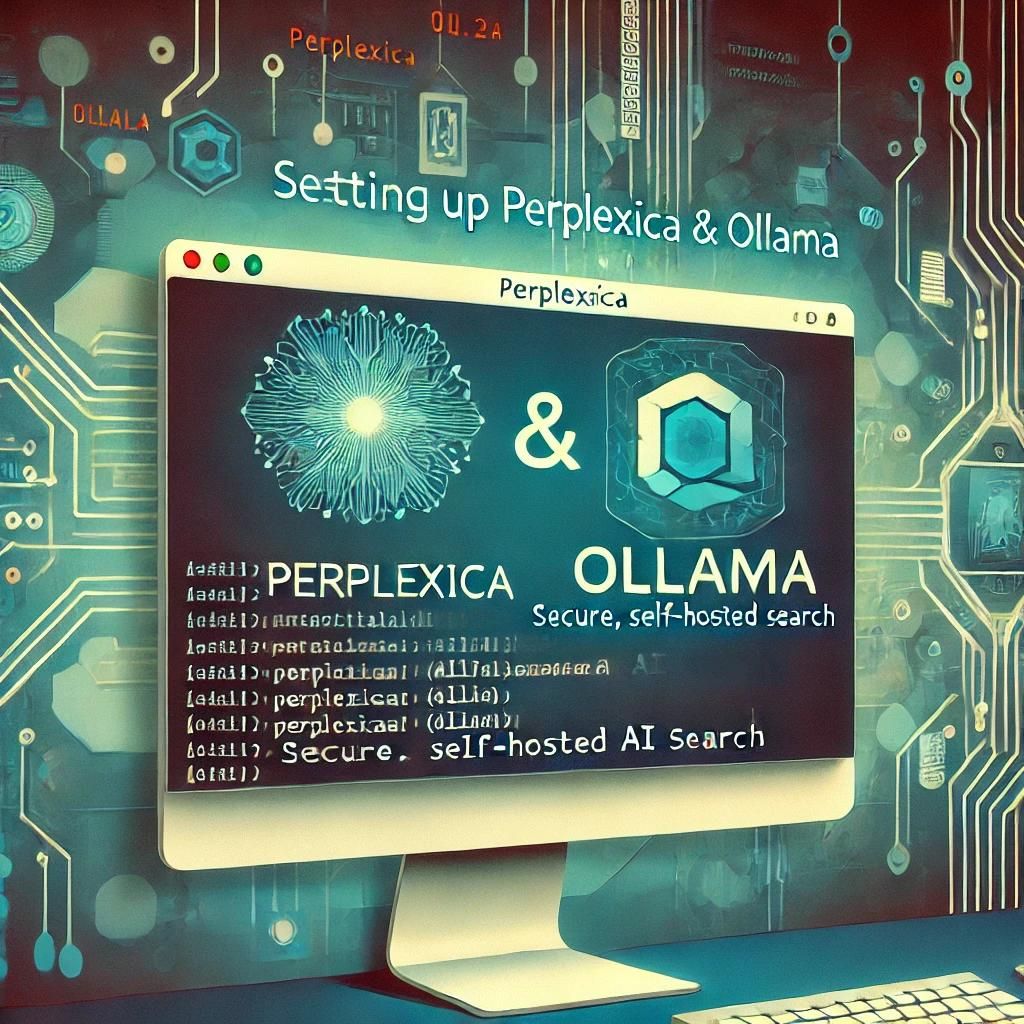Self-Hosting Perplexica and Ollama
 Dave Gaunky
Dave GaunkyTable of contents

Perplexica and Ollama Setup
Are you in the self-hosted camp, enjoying Ollama, and wondering when we'd have something like Perplexity AI but local, and maybe a bit more secure? I had been keeping an eye out when I came across an article on MARKTECHPOST about Perplexica. So I decided to take a crack at it. There were a few issues I encountered which we'll work around in the Perplexica setup, aside from config there was a call property that we need to address. Let's dive in.
Ollama Install and Setup
To begin with Ollama, follow these steps:
Run the installation script using
curl -fsSL https://ollama.com/install.sh | shPull the latest version of Llama3 using
ollama pull llama3:latestPull the latest version of Nomic-Embed-Text using
ollama pull nomic-embed-text:latestEdit the Ollama service file by running sudo systemctl edit ollama.service and adding the following lines
Copy Code [Service] Environment="OLLAMA_HOST=0.0.0.0"Reload the systemd daemon using
sudo systemctl daemon-reloadRestart the Ollama service using
sudo systemctl restart ollama
Perplexica Setup
To set up Perplexica, follow these steps:
Clone the Perplexica repository using
git clone https://github.com/ItzCrazyKns/Perplexica.gitCopy the sample configuration file to a new file named config.toml
using cp sample.config.toml config.tomlOpen config.toml in a text editor (such as nano) and make the following changes:
Change OLLAMA = http://server-ip:11434Comment out the server for SEARXNG and press CTRL+X to exit and Y to save
Open
ui/components/theme/Switcher.tsxin a text editor (such as nano) and make the following changesAccording to this issue, change to line 10
const ThemeSwitcher = ({ className, size }: { className?: string; size?: number }) => {Then press ctrl+x, then y to save the file
Open
docker-compose.ymlin a text editor (such as nano) and make the following changes- Change -
SEARXNG_API_URL=http://server-ip:4000 - Change -
NEXT_PUBLIC_API_URL=http://server-ip:3001/api - Change -
NEXT_PUBLIC_WS_URL=ws://server-ip:3001
- Change -
Build and start the Perplexica container using
docker compose up -d --buildAccess Perplexica by visiting
http://server-ip:3000in your web browser
That's it! With these steps, you should be able to set up both Perplexica and Ollama on your system. If you found this helpful please share this post, donate to my Buymeacoffee, or clap if you're reading this on Medium. Till next time fair winds and following seas!
Subscribe to my newsletter
Read articles from Dave Gaunky directly inside your inbox. Subscribe to the newsletter, and don't miss out.
Written by

Dave Gaunky
Dave Gaunky
A Navy vet who's been working in electronics and tech for over 20 years. Just sharing some knowledge, what to do and not to do.